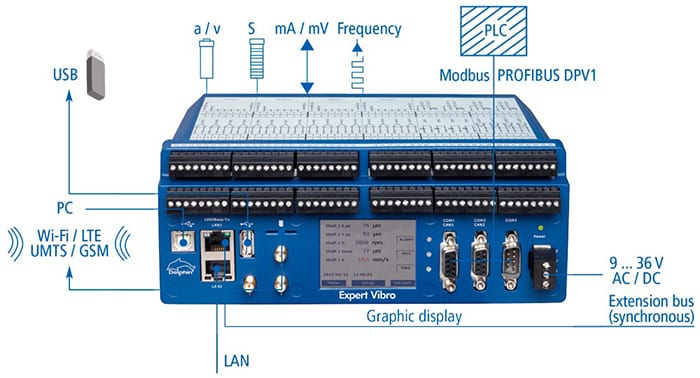Delphin Solution Helps Pinpoint Animal’s Location

CAS DataLoggers provided an acoustic monitoring solution to Coherent Technical Services Inc. based in Maryland. CTSI supplies a broad range of technical products and solutions for the Department of Defense, NASA, and commercial customers. The CTSI design team’s latest program aims at helping the Air Force identify and locate endangered species on Edwards Air Force Base in southern California. CTSI’s lead project engineer on the team explains, “This is a small business innovative research solution we’re developing for the Air Force as part of a project offered by the Department of Defense.” Located on the western edge of the Mojave Desert, the airbase abides by environmental compliance like any other facility, and this includes strict adherence to environmental guidelines. For example, locating the native fauna helps to avoid planning construction on an endangered species habitat.
The Problem
The design team’s challenge is to accurately identify the proximity of several endangered animal species in the area, particularly the Mohave Ground Squirrel which is listed as threatened under the California Endangered Species Act. However these animals are difficult to locate—they hibernate, they’re small in size (only 3-4 inches), and hard to spot. This makes it unproductive and time-consuming to repeatedly take traditional “boots in the field” surveys of the creatures.
The Solution
To solve this problem CTSI is developing an acoustical data acquisition location system to give base personnel a highly-accurate method for finding these animals and other protected species. Rather than just identifying the animals’ general location (say within a quarter-mile or so), the team is working to pinpoint their actual bearing by developing a unique proprietary system that acquires acoustic data outdoors in the midst of the animals’ desert habitat.
CTSI has been involved with this project for 6 months as of early March ’14 and has named its prototype system the “Acoustical Recording Identification Tracking System (ARITS)”. The project is in the hardware and software development cycle, and the project lead plans to start ARITS testing in January 2015. Field operations at Edwards are planned for early 2016.
The System
While designing their system, the team required a high-precision data acquisition and control system with a large number of inputs and which could send the data online for detailed analysis.
As part of the three ARITS systems under development, CTSI is using three Delphin Expert Vibro Data Acquisition and Control Systems sourced from CAS DataLoggers. Each Delphin will record the data from its connected microphone array (consisting of 16 mics mounted on a board), to calculate the bearing, or direction, of the sound during subsequent post-processing and analysis. In this way, the Delphin acts as the digital signal processing element of each system with its internal memory recording what its ‘ears’ hear and its analysis software interpreting it. The microphone array’s data is sent to an industrial test enclosure housing the Delphin along with a PC.
Each Expert Vibro device has 16 High-speed, synchronous analog input channels for direct connection with each array’s microphones. System installation is quickly accomplished owing to the system’s compact design and channel feeds. In this initial phase, the team is using a single channel on each DAQ system as part of a test run. The Delphin’s measurements are made at high precision using their 24-Bit A/D converters, with measurement and configuration data shown on the device’s touchscreen display.
Each channel can sample at high speeds of up to 50kHz per channel. The system also features 4 analog outputs and 8 digital outputs for monitoring. Capable of recording even the smallest data anomalies, the Delphins can precisely analyze the non-periodic signals it is picking up in the desert. Each system also utilizes a dual-core FPGA processor based on ARM technology to provide large reserves of power for online analysis and computations.
For flexible triggering in acoustic monitoring applications, each device has integrated comparators for Keyphasor® sensors and four digital inputs. All channels are galvanically isolated to prevent transverse distortions.
Acoustic Triangulation

In CTSI’s proposed setup, the microphones are mounted on stationary boards on three tripods placed within the ground squirrels’ desert habitat. The spacing of these systems depends on the particular animal vocalization intensity that users are looking for at the time. In the case of the elusive Mohave Ground Squirrel, the ARITS system acquires and records the squirrel’s unique chirp which is made at 6.2 kHz. Each microphone array gives the operator a bearing on the emission location. If all systems detect the same sound, then the processing software triangulates the sound for pinpoint accuracy. The ARITS software processing has the ability to discriminate the Mohave Ground Squirrel from other animals in the area; for example, the data acquisition system knows a squirrel chirp from a distant crow caw. To find the ideal receivers the team is currently connecting the Delphin systems to different kinds of microphones.
Alarm Capability
Whenever a microphone on an array picks up a sound, the Delphins immediately record the signal for later analysis. Each Expert Vibro system has its own internal data storage capability (32 GB/1 billion- point memory) to record over extended periods. The system memory can record raw time signals as well as spectra and characteristic values (Peak-Peak, Gap).
The team is making good use of Delphin’s alarm capability by receiving an automatic notification whenever a sound triggers data recording. In this way, users can analyze the acoustic data in post-processing to clearly differentiate which sounds belong to which animals, and also get a count of how many emissions the Delphin heard over a given period. If needed, the DAQ systems can also send users warnings and alarm conditions via their choice of text messages or emails.
Data Transmission
Once every two weeks, a team member visits the ARITS system and retrieves the project acoustic recordings data over Ethernet. In a quick process, the user simply transfers Delphin’s data to the PC sharing the enclosure with it. After the completion of the next two systems in early 2015, the operator will use the same procedure to collect their data. As an option, if more input channels are required, the Expert Vibro devices can be synchronized with each other.
Under CTSI’s design for the system, the Delphins will soon transmit all measurement data online at high speed over the team’s office building network via the devices’ LAN interfaces. This allows users to access and evaluate measurement data from any authorized PC on their network. The Expert Vibro also supports USB data retrieval for users who opt to collect the data manually.
Vibration Analysis Software
The Expert Vibro system utilizes Delphin ProfiSignal analysis software for data acquisition, vibration analysis, and visualization. ProfiSignal is available to the team as a quick analysis tool in the field, being modular and scalable with an intuitive interface. Users can monitor measurement data on the fly while time signal processing and characteristic curve computations take place directly within the hardware’s DSP.
At any time users can access and analyze processed data–whether online or archived–by selecting the desired time period from the current visualization. Operators can also create diagrams using a range of analysis functions and create customized documentation with a report generator.
CTSI is also developing unique software for this project in cooperation with Cornell University’s Bio-Acoustics Research Program. In this phase of the project, operators are using a test signal in preparation for the upcoming development. With the custom software developed they can zero in on the different sounds they’re hearing in even greater detail.
Benefits
As the Digital Signal Processing element of the ARITS system, the Expert Vibro DAQ system measures, records and transmits the acoustic data, and also performs postprocessing analysis. Here a single system is providing real-time monitoring, local data storage, alarming, and analysis. Delphin is very cost-effective for this application given the high number of channels required–48 in total, and the high sampling rate required.
Around January the CTSI team will finish construction of the first system and construct two more next spring in April. Local testing is planned for next summer to establish and work with the triangulation. The team is hopeful about the system’s success and expects that their upcoming demonstration at Edwards in the autumn will help to further protect the native species in the area. Meanwhile, Delphin’s remote monitoring capability means that the team’s data is viewable not only locally but also online.
CTSI’s team engineer explains, “The strongest factor that made us go with Delphin was the simultaneous data sampling from the system’s 16 channels with the GPS time stamping option–that was critical for us since this is all time-of-arrival critical measurement. With 16 microphones on each system’s array board, it’s key to the success of the project.”
For more information on Delphin Expert Vibro Data Acquisition and Control Systems, acoustic monitoring or to find the ideal solution for your application-specific needs, contact a CAS DataLogger Application Specialist at (800) 956-4437 or request more information.

